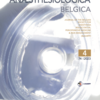Severe and acute hypercapnia, subsequent to the mistaken connection of a carbon dioxide cylinder on the nitrous oxide manifold: a report of three simultaneous cases
Hypercapnia, Nitrous Oxide, Cylinder fittings
Published online: Dec 21 2023
Abstract
Ensuring the delivery of correct gas mixtures during anesthesia is of paramount importance for perioperative patient safety. Accidents resulting from a problem with the supply of medical gases to the operating theater are rare; however, the consequences can be serious. Given the continuous advances in safety measures for the administration of medical gases, it is reasonable to assume that current patients consistently receive the intended gas, as requested by the anesthesiologist. Nevertheless, it is necessary to acknowledge that human error may still occur, despite the automation and safety protocols in place.
Simultaneously in three operating rooms, we observed abrupt and sever cases of hypercapnia that occurred during general anesthesia when nitrous oxide was requested. These incidents were due to a carbon dioxide cylinder connected in the place of a nitrous oxide cylinder on the manifold.
Patient management, operating theater supervision and factors responsible for this serious adverse event will be discussed in this report. This problem appears to be fairly specific to Belgium where the standard cylinder fittings for the two gasses involved are either the same or close enough to be misconnected on the manifold. Local measures, as well as general recommendations, are proposed to prevent a similar incident in the future.
